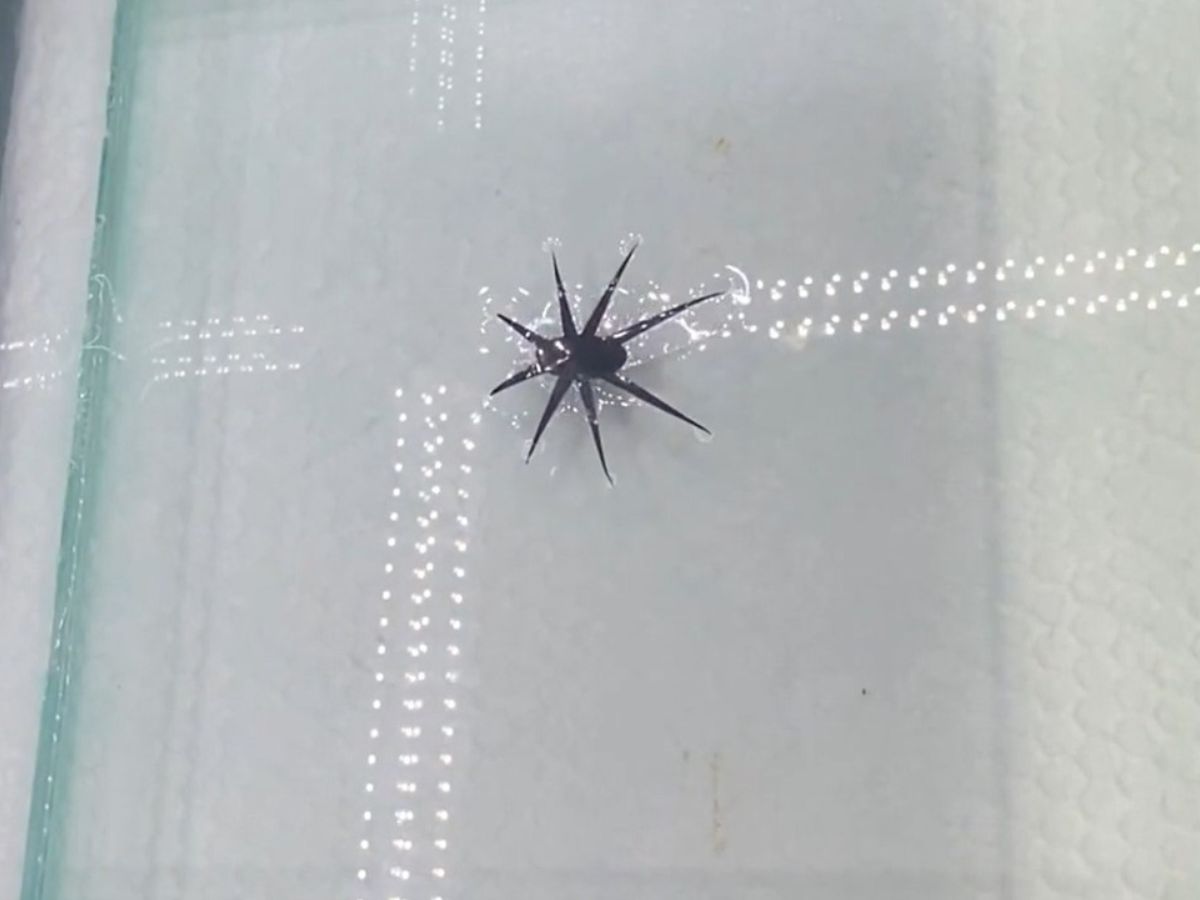Science
Innovative Robots Use Heat to Walk on Water with New Technique

A groundbreaking technique developed by researchers at Stanford University enables robots to walk on water by utilizing heat-powered motions. This innovation opens new avenues for robotics, potentially transforming applications in search and rescue, environmental monitoring, and marine exploration.
The study, published in Science Advances in early 2023, illustrates how the integration of a heat-driven mechanism allows robotic devices to mimic the natural movements of water striders, insects known for their ability to walk on water surfaces. By harnessing thermal energy, these robots can generate sufficient force to support their weight and navigate aquatic environments.
Mechanics Behind the Technology
The robots employ a unique mechanism that converts thermal energy into kinetic energy. When heated, specific materials expand and create movement, allowing the robots to push against the water surface effectively. This principle mirrors the way water striders utilize their long legs to create surface tension.
According to the lead researcher, Alfredo Gonzalez, the ability to control the robots’ movements through temperature variations is a significant advancement. “This technology could lead to robots that operate more efficiently in wet conditions, where traditional methods fail,” he stated.
The research team also collaborated with scientists from the University of California, Berkeley, enhancing the project’s interdisciplinary approach. Their combined efforts focus on refining the robots’ designs to improve stability and control on water.
Potential Applications and Future Prospects
The implications of this technology are vast. In disaster response scenarios, these robots could traverse flooded areas to deliver supplies or gather important data without risking human lives. Similarly, in ecological studies, they can monitor aquatic ecosystems with minimal disturbance.
While the current prototypes are still in development, researchers aim to enhance their functionality and durability. The team is actively exploring new materials and configurations that would allow for more versatile applications.
Overall, this innovative approach to robotics not only showcases the potential for heat-powered movements but also emphasizes the importance of sustainable energy solutions in technology. As the field progresses, the team anticipates further breakthroughs that could redefine how robots interact with various environments.
-

 Lifestyle5 months ago
Lifestyle5 months agoLibraries Challenge Rising E-Book Costs Amid Growing Demand
-

 Sports4 months ago
Sports4 months agoTyreek Hill Responds to Tua Tagovailoa’s Comments on Team Dynamics
-

 Sports4 months ago
Sports4 months agoLiverpool Secures Agreement to Sign Young Striker Will Wright
-

 Lifestyle4 months ago
Lifestyle4 months agoSave Your Split Tomatoes: Expert Tips for Gardeners
-

 Lifestyle4 months ago
Lifestyle4 months agoPrincess Beatrice’s Daughter Athena Joins Siblings at London Parade
-

 Science4 months ago
Science4 months agoSan Francisco Hosts Unique Contest to Identify “Performative Males”
-

 World4 months ago
World4 months agoWinter Storms Lash New South Wales with Snow, Flood Risks
-

 Science5 months ago
Science5 months agoTrump Administration Moves to Repeal Key Climate Regulation
-

 Business5 months ago
Business5 months agoSoFi Technologies Shares Slip 2% Following Insider Stock Sale
-

 Science5 months ago
Science5 months agoNew Tool Reveals Link Between Horse Coat Condition and Parasites
-

 Sports5 months ago
Sports5 months agoElon Musk Sculpture Travels From Utah to Yosemite National Park
-

 Science5 months ago
Science5 months agoNew Study Confirms Humans Transported Stonehenge Bluestones









